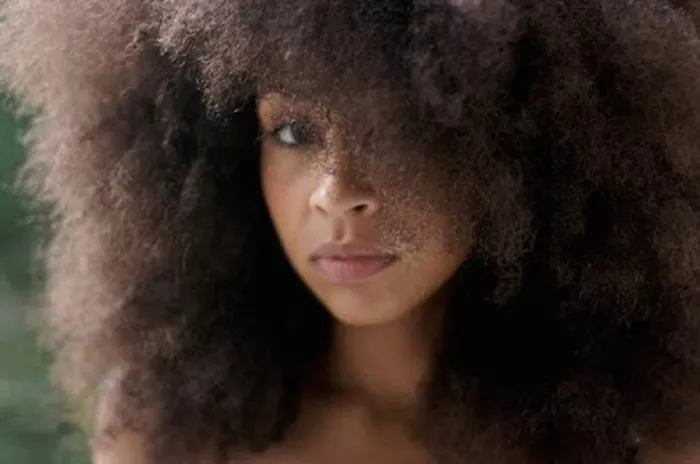Thick hair is often associated with vitality and confidence. However, factors like genetics, aging, stress, and improper care can lead to thinning hair. If you’re struggling with fine or thinning hair, don’t lose hope! Achieving thicker hair is possible with the right knowledge and consistent effort.
This guide will walk you through science-backed strategies, lifestyle changes, and haircare routines to help you grow fuller, stronger locks.
Understand How Hair Grows
Before diving into solutions, it’s important to understand the basics of hair biology.
Hair Structure
Each hair strand has three layers: the cuticle (outer protective layer), cortex (middle layer with pigment and strength), and medulla (innermost layer).
Hair thickness depends on the diameter of individual strands and the density (number of hairs per square inch).
Hair Growth Cycle
Hair grows in three phases:
- Anagen (Growth Phase): Lasts 2–7 years. Hair cells divide rapidly, and the strand grows longer.
- Catagen (Transition Phase): 2–3 weeks. Growth stops, and the hair detaches from its blood supply.
- Telogen (Resting Phase): 3–4 months. Old hair falls out, and new hair begins to grow.
Thinning occurs when the anagen phase shortens, or more hairs enter the telogen phase prematurely.
Identify the Root Cause of Thinning
To fix thinning hair, address the underlying issue. Common causes include:
Genetics
Androgenetic alopecia (male/female pattern baldness) is hereditary and linked to hormone sensitivity.
Hormonal Imbalances
Thyroid disorders, menopause, or postpartum changes disrupt growth cycles.
Nutritional Deficiencies
Lack of protein, iron, zinc, or vitamins (Biotin, D, E) weakens hair.
Stress
Physical or emotional stress pushes hair into the telogen phase, causing shedding (telogen effluvium).
Damage from Styling
Heat tools, tight hairstyles (e.g., ponytails), and chemical treatments (coloring, perms) break strands.
Scalp Health
Dandruff, fungal infections, or clogged follicles block hair growth.
Medical Conditions
Autoimmune diseases (alopecia areata), anemia, or PCOS affect hair thickness.
Action Step: Consult a dermatologist or trichologist to diagnose your specific cause.
Eat a Hair-Friendly Diet
Nutrition fuels hair growth. Focus on these key nutrients:
Protein
Hair is made of keratin, a protein. Eat lean meats, eggs, fish, beans, or lentils daily.
Iron
Iron deficiency causes anemia, reducing oxygen supply to follicles. Sources: spinach, red meat, tofu.
Omega-3 Fatty Acids
Reduce inflammation and moisturize the scalp. Found in salmon, walnuts, and chia seeds.
Biotin (Vitamin B7)
Strengthens keratin structure. Eat eggs, almonds, or sweet potatoes.
Zinc
Repairs hair tissue. Oysters, pumpkin seeds, and chickpeas are rich in zinc.
Vitamin D
Low levels are linked to hair loss. Get sunlight or eat fortified cereals/fatty fish.
Avoid Crash Diets: Rapid weight loss triggers nutrient deficiencies and shedding.
Adopt a Gentle Haircare Routine
Harsh products and styling habits damage hair.
Follow these tips:
Wash Hair Correctly
- Use sulfate-free shampoo to avoid stripping natural oils.
- Massage the scalp gently to boost blood flow.
- Conditioner: Focus on ends, not the scalp, to prevent clogging follicles.
Limit Heat Styling
Air-dry hair when possible. If using heat tools, apply a heat protectant spray first.
Avoid Tight Hairstyles
Ponytails, braids, or buns pull on roots, causing traction alopecia.
Trim Regularly
Cut split ends every 6–8 weeks to prevent breakage traveling up the strand.
Choose the Right Products
Look for volumizing shampoos with ingredients like niacinamide or collagen.
Avoid heavy oils/creams that weigh hair down.
Boost Scalp Health
A healthy scalp = healthy hair.
Try these methods:
Exfoliate
Use a scalp scrub once a week to remove dead skin and product buildup.
Massage Daily
Stimulate blood flow with 5-minute massages using fingertips or a scalp massager.
Treat Dandruff
Use anti-fungal shampoos with ketoconazole or tea tree oil to clear flakes.
Try Essential Oils
Rosemary oil improves circulation (mix with a carrier oil like jojoba).
Peppermint oil cools and invigorates follicles.
Use Hair-Thickening Treatments
Minoxidil (Rogaine)
Over-the-counter topical solution that extends the anagen phase. Works for 60% of users.
Supplements
Biotin, collagen, or prenatal vitamins (after consulting a doctor).
PRP Therapy
Platelet-rich plasma injections stimulate dormant follicles.
Laser Therapy
Low-level lasers boost cellular activity in follicles.
Lifestyle Changes for Thicker Hair
Manage Stress
Practice yoga, meditation, or deep breathing to lower cortisol levels.
Sleep Well
Aim for 7–8 hours nightly. Use silk pillowcases to reduce friction.
Quit Smoking
Smoking restricts blood flow to the scalp.
Stay Hydrated
Dehydration makes hair brittle. Drink 8–10 glasses of water daily.
When to Seek Professional Help
If home remedies fail, consult a specialist for:
- Prescription medications (e.g., finasteride).
- Hair transplant surgery.
- Hormone therapy for imbalances.
Conclusion
Thicker hair requires patience and a holistic approach. By nourishing your body, protecting strands, and prioritizing scalp health, you can encourage fuller, stronger growth. Start with small changes, track progress, and stay consistent—your hair will thank you!
Related topics:
Can You Wet Your Hair After a Perm: Post-Perm Care
How Much Does Laser Hair Restoration Cost?
How Long Does Blonde Dye Last?


